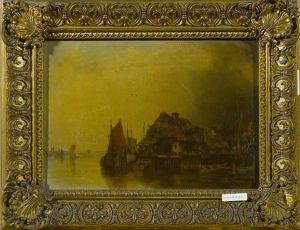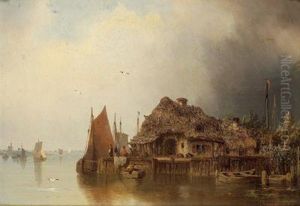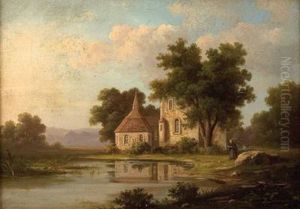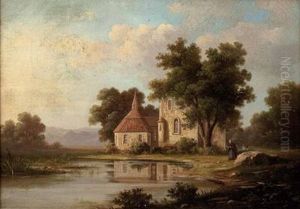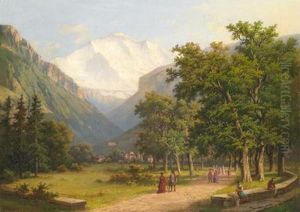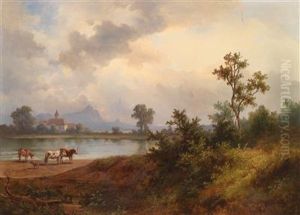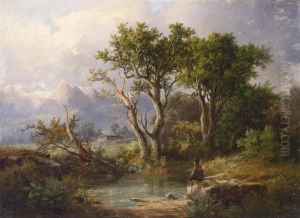Heinrich, Hermann Johann Paintings
Hermann Johann Heinrich was a German painter known for his contributions to landscape painting and his role in the development of the plein air style in Germany. Born on February 16, 1862, in Kiel, Heinrich showed an inclination towards art from a young age. He was initially influenced by the natural beauty of his hometown and the surrounding landscapes of northern Germany.
Heinrich's education in art began at the Weimar Saxon-Grand Ducal Art School, where he was taught by the likes of Theodor Hagen, who was a proponent of plein air painting, emphasizing the importance of painting outdoors to capture the true essence of the light and atmosphere. This became a significant aspect of Heinrich's work throughout his career.
In the 1880s, Heinrich traveled extensively throughout Europe, including stays in Italy and the Netherlands, where he further honed his skills and absorbed the nuances of light and landscape that were to become hallmarks of his painting style. His work was characterized by a keen observation of natural light and its effects on the landscape, which he rendered with a delicate and nuanced palette.
Heinrich's landscapes often depicted the German countryside, and he was particularly fond of painting the effects of the changing seasons and different times of day on rural scenes. His paintings were not just simple representations of nature; they conveyed a sense of mood and atmosphere that resonated with viewers and critics alike.
Throughout his career, Heinrich participated in numerous exhibitions and became a member of various art associations. He received accolades for his work and was appreciated for his ability to capture the transient effects of light. Despite the changing artistic trends of the early 20th century, Heinrich remained dedicated to his style and continued to paint landscapes that reflected his deep connection to nature.
Hermann Johann Heinrich passed away on October 19, 1942, in Munich. His legacy is preserved in the form of his art, which continues to be admired for its contribution to the landscape genre and its embodiment of the plein air tradition within German painting.
